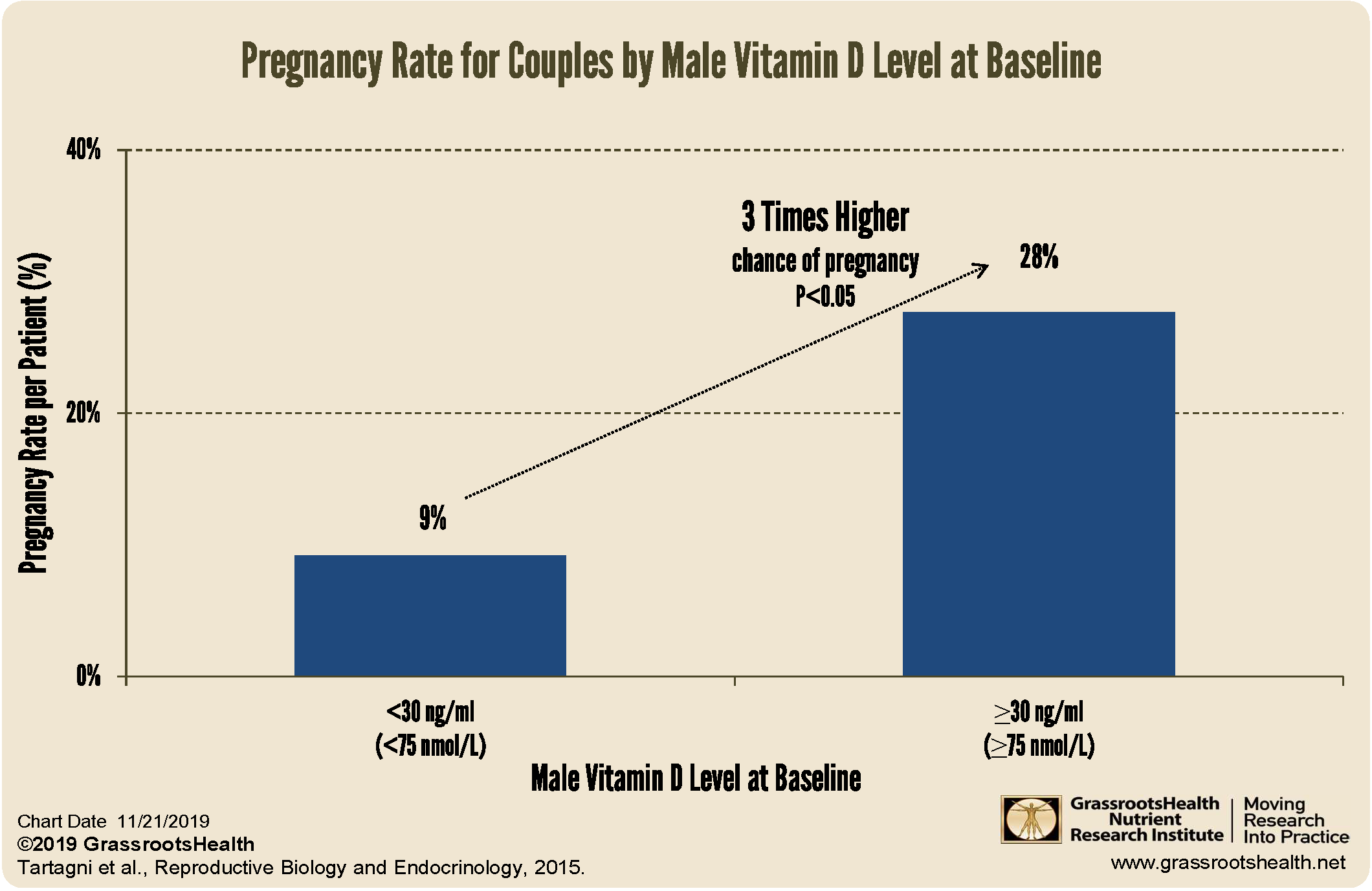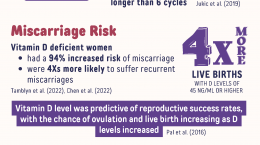Published on November 22, 2019
There are many published benefits of vitamin D for a healthy pregnancy and infant development, beginning in the preconception phase and continuing through pregnancy and early childhood. A recent post highlighted a study which found that a higher vitamin D level of the woman was related to an increased chance of conception within a 6 month period.
What about the role of vitamin D in male fertility, pregnancy and delivery rates?
 A study by Tartagni et al., published in the journal Reproductive Biology and Endocrinology, observed the pregnancy, delivery, and miscarriage rates of 102 couples who underwent infertility treatment of induced ovulation and timed intercourse over a 3 cycle period. All female partners were 23-35 years old and had experienced infertility for a period of 12 to 36 months.
A study by Tartagni et al., published in the journal Reproductive Biology and Endocrinology, observed the pregnancy, delivery, and miscarriage rates of 102 couples who underwent infertility treatment of induced ovulation and timed intercourse over a 3 cycle period. All female partners were 23-35 years old and had experienced infertility for a period of 12 to 36 months.
A total of 90 couples completed the study with couples split into two groups – 54 couples whose male partners had a vitamin D level below 30 ng/ml (75 nmol/L) and 36 couples whose male partner had a vitamin D level of at least 30 ng/ml. The female partners of both groups had similar age, duration of infertility, BMI, and pregnancy hormone levels.
What did this study find?
The pregnancy rate per patient and per cycle as well as delivery rate per patient and per cycle were all significantly higher among the couples whose male partner had a higher vitamin D level compared to the lower vitamin D. There was also a tendency towards a higher rate of miscarriage in the group with lower male vitamin D levels, although this particular finding was not statistically significant.
The chart above shows the pregnancy rates per patient for each of the groups. Findings from this study support the importance of vitamin D for male partners when it comes to increasing the chances of conception and a healthy pregnancy and baby.
Dads need vitamin D, as well as moms!
Make sure you know your vitamin D level, and take steps to keep it within a target of 40-60 ng/ml or 100-150 nmol/L! Through GrassrootsHealth Nutrient Research Institute, you can also test your essential elements magnesium, copper, zinc and selenium, toxins such as lead, mercury and cadmium, as well as your omega-3 levels, inflammation levels and thyroid stimulating hormone (TSH) level. Find out your levels today! Log on to the shop (click the link below) to get your tests and see for yourself if your level can be improved.
Make sure you track your results before and after, about every 6 months!
Click Here to Access the Shop Page
How can I track my nutrient intake and levels over time?
To help you track your supplement use and nutrient levels, GrassrootsHealth has created an online tracking system called myData-myAnswers. For each specific supplement, you can track what days you take it, how much, and many other details. This will help you know your true supplemental intake and what patterns of use work for you to reach and maintain optimum nutrient levels. Check it out today!







